This information is current as of April 3, 2020. Visit the Centers for Disease Control and Prevention website for the most up-to-date guidance.
A lot of information about the novel coronavirus, COVID-19, has been provided in the past few weeks — including that just covering your nose and mouth will not protect you (or anyone else) from contracting the virus.
This article discusses basic information regarding proper respirator use during these uncertain times.
OSHA requirements
In light of the COVID-19 pandemic outbreak, OSHA released temporary enforcement guidance for healthcare respiratory protection and annual fit-testing for N95 filtering facepieces and other NIOSH-certified respirators. Some of the requirements include:
- Appropriate respiratory protection is required for all healthcare personnel providing direct care of COVID-19 patients.
- Only NIOSH-certified respirators can be worn to help prevent the spread of the virus.
- Perform initial fit tests for each healthcare provider with the same model, style, and size respirator that the worker will be required to wear for protection against COVID-19 (initial fit testing is essential to determine if the respirator properly fits the worker and is capable of providing the expected level of protection).
- Respirator maintenance, care, and training is required.
NIOSH-certified respirators approved for protecting against COVID-19
The tight-fitting, NIOSH-certified respirators used to protect against COVID-19 prevent you from inhaling small infectious particles that spread through the air over long distances after an infected person coughs or sneezes. The CDC recommends only people infected by COVID-19, or the people treating them — like healthcare workers, first responders, and home health personnel — use N95 or higher respirators. As of April 3, 2020, the CDC recommends that members of the general public wear cloth face coverings while in public settings where other social distancing measures are difficult to maintain. For more information on the use of cloth face coverings, visit this page on the CDC website.
Examples of negative pressure respirators approved for protecting against COVID-19
| Respirator | Picture | CDC Description |
| N95 | 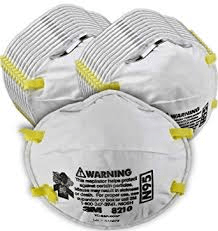 |
N95 particulate filtering facepieces filter at least 95% of very small (0.3 micron) test particles.
When properly fitted, the filtration capabilities of N95 respirators exceed those of face masks. However, even a properly fitted N95 respirator does not completely eliminate the risk of illness or death. |
| N99 | 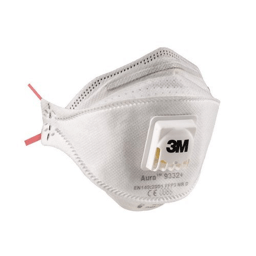 |
N99 particulate filtering facepiece respirators filter at least 99% of airborne particles, but are not resistant to oil. |
| N100/P100 Mask | 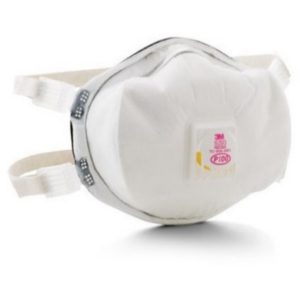 |
N100 particulate filtering facepiece respirators filter at least 99.97% of airborne particles, but are not resistant to oil.
P100 particulate filtering facepiece respirators filter at least 99.97% of airborne particles and are strongly resistant to oil. |
| P100 half face | 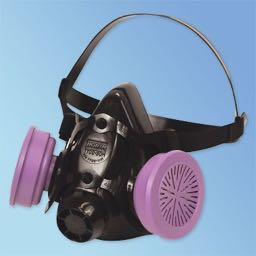 |
Reusable mask with disposable P100 filters |
| 3M 1860/1860S | 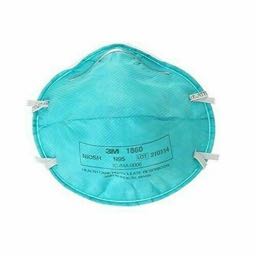 |
N95 example
(The 1860S is a smaller version of the 1860) |
| 3M 1870 | 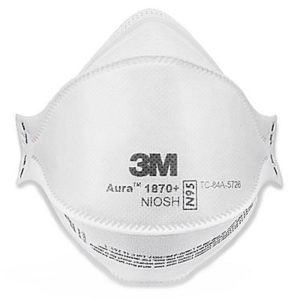 |
N95 example |
| 3M 8210 | 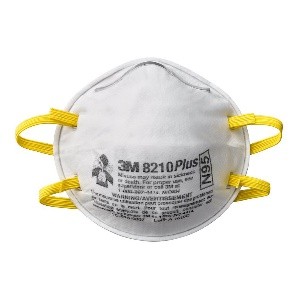 |
N95 example |
| 3M 9010 | 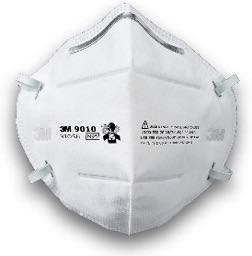 |
N95 example |
| Gerson 1730 | 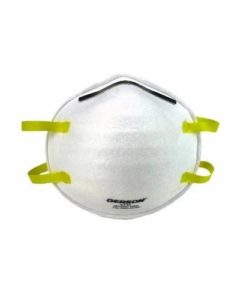 |
N95 example |
| Medline/Alpha Protech NON27501 |  |
N95 example |
| Moldex 1512 | 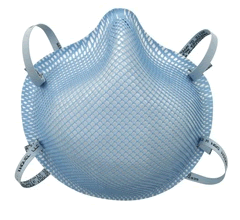 |
N95 example |
| Moldex 2201 | 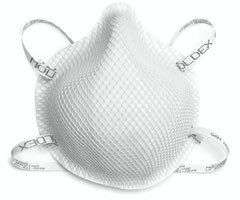 |
N95 example |
For other types of respirators that protect against COVID-19, including respirators that may be past their expiration date, please see CDC Release-Stockpiled N95.
Examples of respirators NOT approved for protecting against COVID-19
| Surgical masks (face masks) | 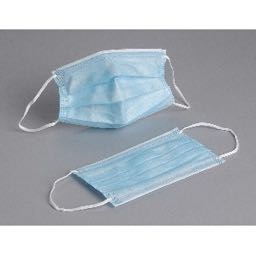 |
Surgical masks are used for respiratory viruses that spread from large sprays and droplets and travel short distances. These fit loosely. |
| Handmade masks | 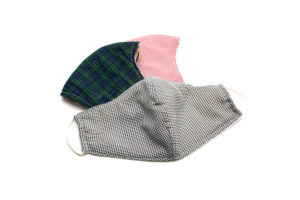 |
Handmade masks will not block COVID-19 airborne particles. They can be worn over an N95 as long as they don’t disrupt the N95 seal. |
Who should not wear respirators
Members of the general public are discouraged from wearing N95 respirators or any other NIOSH-certified respirator. They’re designed for those with COVID-19 and the HCPs, workers, and caretakers who are in close proximity to them.
Further, according to the OSHA Respiratory Protection Standard, employees shall not wear tight-fighting respirators if facial hair or any condition that interferes with the face-to-facepiece seal is present.
For more information on respirators, check out these infographics from the CDC.
Fit testing
A fit test is an OSHA-approved method of determining if a respirator fits and is properly sized to an individual. A fit test does two things:
- Makes sure the mask sits tightly and reasonably comfortably on an individual’s face
- Evaluates the seal created between the mask and the person’s skin
OSHA requires that an initial fit test be performed before using a respirator — the fit test will ensure you are wearing the right size respirator and that it has a proper seal. However, you need initial fit tests for each type of respirator you’ll be wearing. For example, if the fit test is performed using 3M 8210 respirator, size small, you can continue wearing the same brand and size. But if you want to wear a 3M 1860 respirator, you must have another initial fit test performed.
Trained evaluators conduct fit tests by facilitating a series of breathing, speaking, and movement exercises.
Caring for your respirators
Before and after every shift, you must carefully inspect your respirator. Look for the following:
- Visually inspect the respirator to determine if its integrity has been compromised.
- Check that components such as the straps, nose bridge, and nose foam material are not degrading. Damage to these pieces can affect the quality of the fit and seal and the effectiveness of the respirator.
- If the integrity of any part of the respirator is compromised, or if a successful user seal check cannot be performed, discard the respirator and use another respirator.
- Users should perform a user seal check immediately after they put on a respirator and continuously throughout their shift. If a seal check is unsuccessful at any point, they should not use that respirator.
If you’re running low on N95 respirators, refer to this guide from the CDC. And remember — also wear eye protection to prevent COVID-19 transmission through the eyes.
In the current environment, it’s critical that your staff follow the recommendations issued by the CDC. We’re here to answer any questions you have about respirators and fit testing. Please call 906-228-5125 or email us at hello@trimediaee.com to get in touch with our health and safety team.

